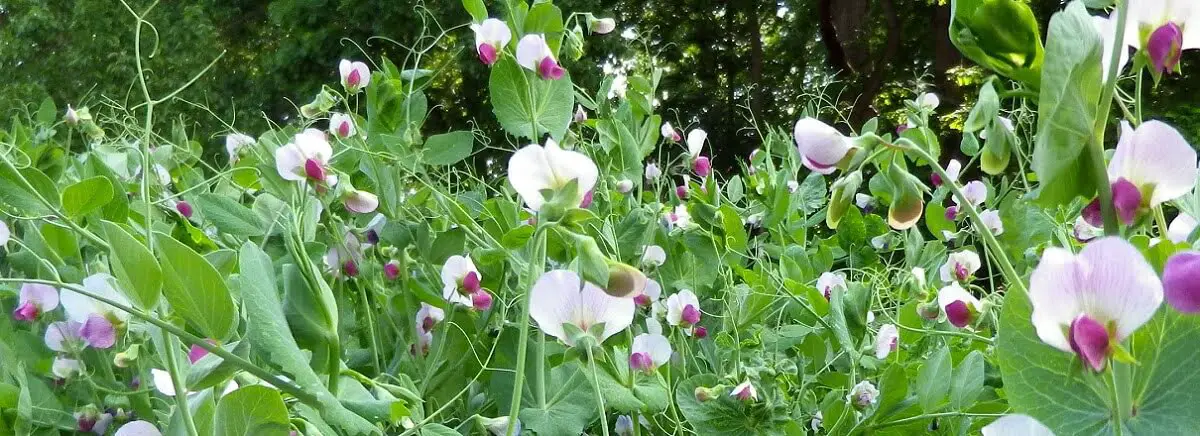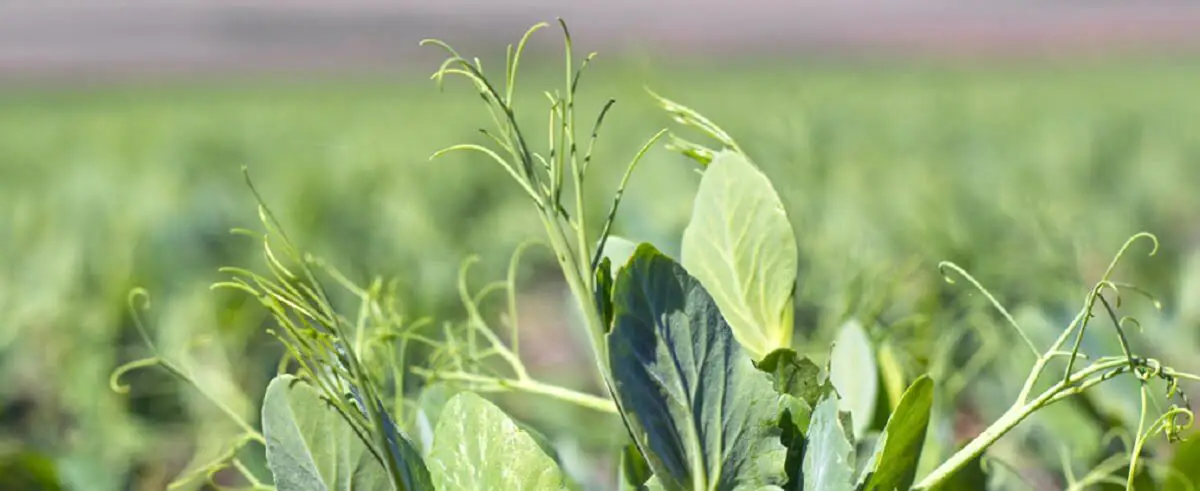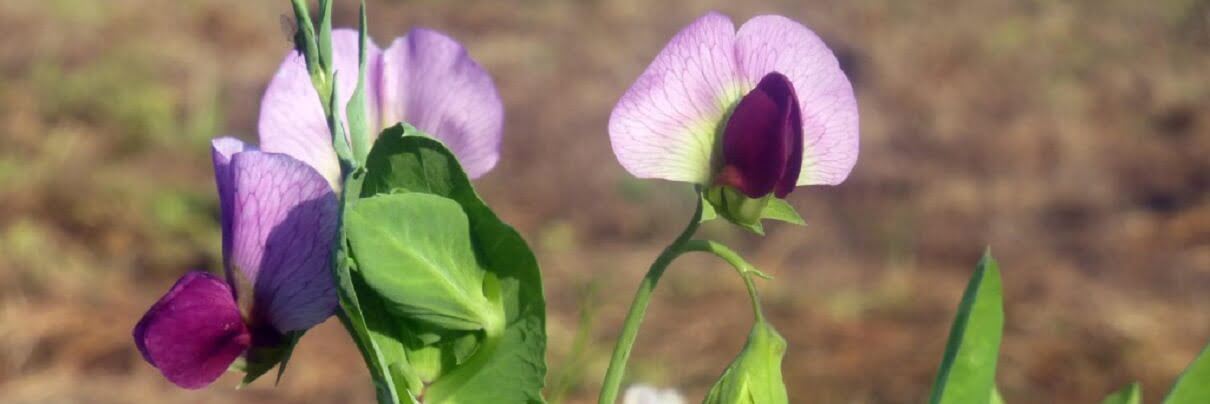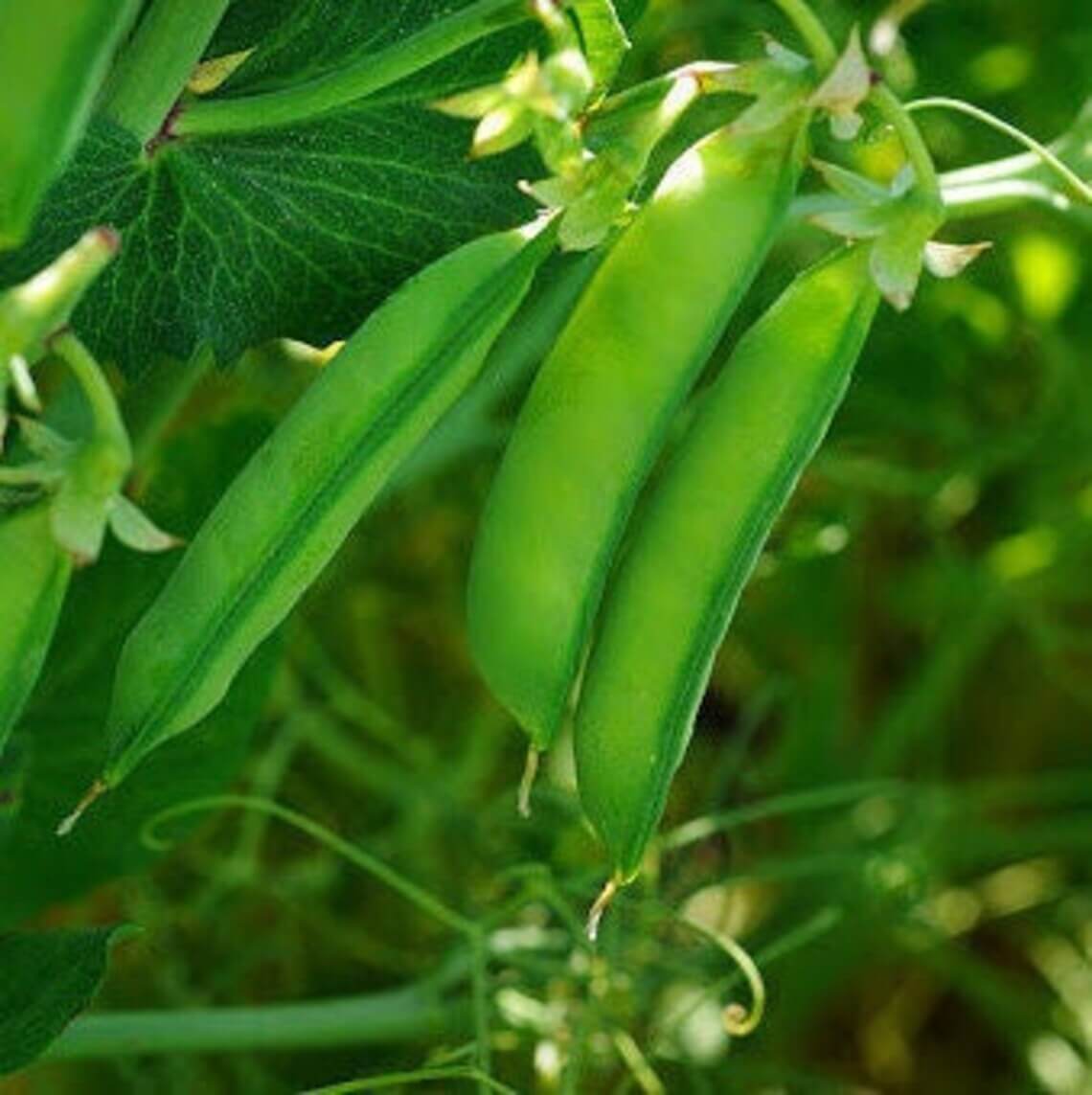Planting Winter Peas Guide What You Need To Know
What Are Winter Peas?

Winter peas get classified as a rapid low-growing annual legume. Many gardens like to use the winter pea as an end-of-season cover crop.
Legumes are a great way to naturally add additional nitrogen back into our gardens while protecting the soil from weeds.
They will protect your soil over the winter and can be green manure by tilling the plant into your soil at the start of the next season. It is a fast decomposing green matter making it an optimal choice as green manure.
Winter peas are a low-growing vine with shallow roots that reach a height between two and four feet tall. They grow best in well-draining soil.
The winter peas will not do very well if you live in an arid climate. They need consistent moisture with at least 20 inches (51 cm.) of rain per year.
When to Plant Winter Peas
It depends on your location for the best time to plant winter peas.
Winter peas do not do well in hot weather, so they will perform best in regions that have cooler summers or during the fall. While they can tolerate frost, they will not survive in temperatures 0F to -10F or -17C to -23C.
Mid-fall is the general guidance for when you want to have your winter peas planted.
This would be around the second week of October for somewhere like Wisconsin.
Where I live, it gets colder much faster, and I need to have my winter peas planted in the second week of September.
Winter Peas Germination Time
On average, any variation of pea will take between 7 and 30 days for germination to happen.
You can speed up the process if you put the seeds in water, let them soak in the water for one to two days, and then plant them.
The soil's temperature will also help determine how quickly they germinate. A soil temperature of 65 to 70 degrees Fahrenheit is where the peas will germinate as fast as possible.
When the soil temperature reaches 75 degrees Fahrenheit (24 degrees Celsius) or higher, the peas will still quickly germinate. Still, fewer of the seeds will actually get to grow.
Winter Peas Planting Depth
Peas are one of the few plants that do not benefit from transplanting and do great with direct planting into the plot where you will be growing them.
Plant the seeds into the ground between 1 and 1.5 inches deep. Under 1 inch may cause birds and other animals to eat them. Keep the seeds between one to two inches distance between each seed.
What Do Winter Peas Look Like
It is a vine plant growing between two and four feet high, depending on the soil's quality and fertility.
It has hollow slender stems that are pale green with toothed margins.
On the tops of the plant, you will find slender tendrils. Tendrils are thin thread-like appendages of a climbing plant that will often grow in a spiral form that stretches out and twines around any suitable support.

Winter peas also go into flowering in the springtime. They will produce pinkish-purple in color flowers that look pretty nice.

As long as the plants are not overgrazed, seed production can occur in the pods when they are two to three inches long and will contain several round seeds.

The seeds will be around 7mm in width. They are yellowish, and if you store them in a dark, cool, dry place, you can keep them for up to two years and still have a high germination rate.
How to Protect Winter Peas From Frost
Winter peas adapt great in the cold, but if you would like to take extra precautions, the most common way is to use a cover to act as a barrier between the wind and night chill.
Using a traditional garden blanket, commercial plant tarp, or even placing a bed sheet over them can be enough to help them get through some extra colder nights.[8]
What to Plant With Winter Peas
Other plants get mixed in when the winter peas are used on the garden plot as a cover crop. The most common different types of plants placed with them are a variation of oilseed radishes or various types of clover.
What Are The Advantages of Growing Winter Peas?
They will help to minimize soil erosion on your garden or farm plot.
It will help you add more organic matter to your soil, helping to feed the microorganisms and improving the quality of your soil.
There will be more nitrogen naturally added to the soil. This will help reduce your need to use fertilizers in the future.
The added organic material in the soil helps to the aeration of the soil reducing the soil compaction.
Like the increase in microorganisms, adding more organic materials also benefits the encouragement of earthworms.
Winter peas are a cover crop and help prevent weeds from moving into the soil.
Having healthier soil helps keep our plants healthy, reducing the plant's chance of disease.
What Are The Disadvantages of Growing Winter Peas?
The extra labor effort to plant winter peas is not a concern for my home garden. The additional labor and cost (planting and killing) may not be acceptable for large farms.
While green manure is a good source of food for microorganisms in the soil, it can also increase the pest populations in our gardens.
When we increase the pest populations in our gardens, our plants become significantly more susceptible to other diseases.
You should add brassicas or grasses into the soil to help reduce the chances of actinomyces root rot (in peas). This is known as tillage allelopathy and requires more work on the gardener.
Summary
Winter peas are easy to grow, and they grow relatively quickly. We can use it as a cover crop or grow it at the end of the season and till it into our soil at the start, providing green manure into our soils for the next season.
Adding green manure to the soil is a perfect way to keep your soil healthy and reduce your need for synthetic fertilizers later in the growing season.
It does not do well in clay soil because of its shallow roots and the need for well-draining soil to grow best.
If you want to keep them growing for a bit longer when it is getting colder, you can cover the winter peas with something overnight.
Similar Articles
Growing Scindapsus Aureum
Planting Winter Rye
Planting Crimson Clover
Planting Winter Wheat
Planting Forage Radish Cover Crop
[1]https://www.researchgate.net/figure/Advantages-and-Disadvantages-of-Using-Cover-Crops_tbl1_43281857
[2]https://www.familyfoodgarden.com/winter-peas/
[3]https://www.iamcountryside.com/growing/winterize-your-garden-austrian-winter-peas
[4]https://www.johnnyseeds.com/growers-library/farm-seed-cover-crops/library-farm-seed-winter-cover-crops.html
[5]https://www.gardeningchannel.com/field-peas-garden-cover-crop/
[6]https://www.growerexperts.com/pea-plant-growth-stages
[7]https://www.familyfoodgarden.com/winter-peas/
[8]https://www.gardeningknowhow.com/edible/grains/cover-crops/disadvantages-of-cover-crops
[9]https://peppershomeandgarden.com/protect-peas-frost/
[10]https://homeguides.sfgate.com/depth-spacing-plant-peas-54211.html